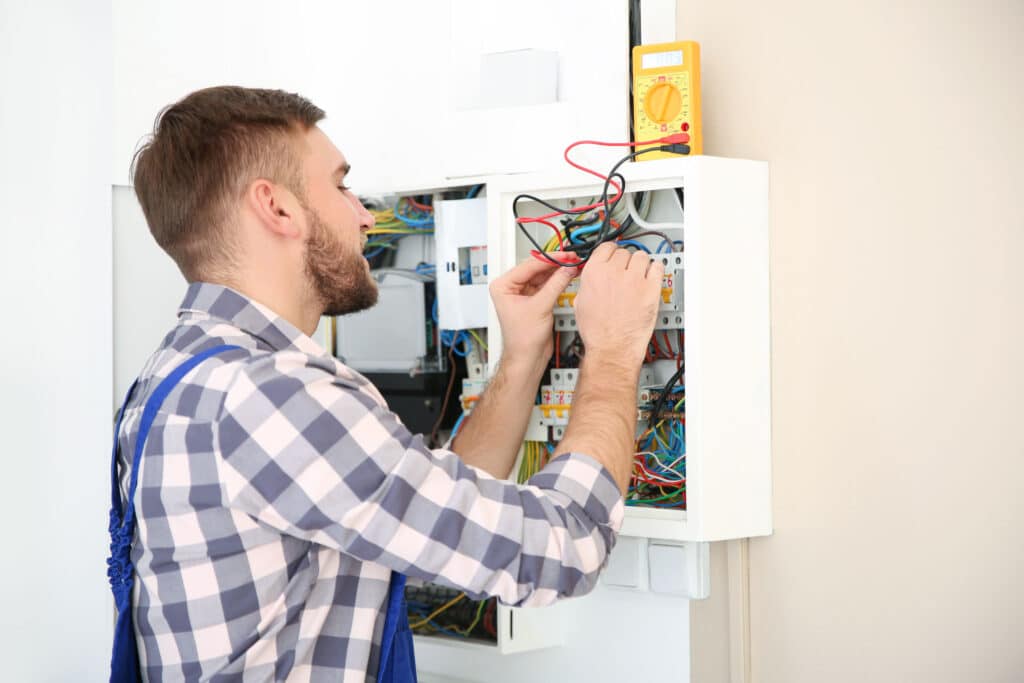Do You Need to Increase Your Electrical Service?
Another way that electricians describe a service increase is “heavy up”. However you say it, it means that the ampacity of the electric service for a property is increased, allowing the electrical system to handle a higher load. This increases available amperage at the service panel, often from 100 to 200 amps, especially if the house was built in the last 30 years. Larger homes may have an existing 200-amp service and need an increase to 400 amps. In homes built more than 30 years ago, the service may be as small as 60 amps. This feature is commonly found in homes built between 1950 and 1965. Many items in your home that you couldn’t imagine living without may not have even existed during this period. Electrical appliances such as dishwashers, large HVAC systems, hot tubs, and computers require a 60-amp service, which is far less than the recommended 100-amp service.
Safety
Should a homeowner be concerned if they have a 60-amp service panel? Not necessarily, but this service is minimal by today’s standards, with the numerous electrical appliances and devices. It works this way: if you are using more than 60 amps at one time with your combined electrical appliances, the fuse or circuit breaker will blow. This isn’t necessarily unsafe because the fuse or breaker is functioning as it should and shuts off the power, protecting the wiring. But most likely, this will be aggravating, inconvenient, and possibly costly for the homeowner.
Another important consideration is the size of your branch circuit breakers or fuses. With either a 60-amp or 100-amp service, 15-amp circuits can only power a certain number of appliances simultaneously (15 amps worth). Some homeowners increase the fuse or breaker size to an amperage larger than the wiring can handle, unaware that this could cause the wire to overheat and create a very unsafe condition, or even a fire. Adding more circuits can be the solution to this issue, but the service panel must be large enough to accommodate the additional breakers and wiring. In some cases, a subpanel can be added to accommodate additional circuits. This depends on the existing service size and electrical load, among other factors.

Electrician with digital multimeter checking voltage indoors
From the 1950s through the 1980s, a well-known company (Federal Pacific Stab-Lok) manufactured circuit breaker panels installed in millions of homes in North America. Some experts deemed these panels to be inadequate in providing proper protection to homeowners. They found the panels would work well for many years, but then overheat after one over-current situation or short circuit. Overheating would occur when a breaker failed to trip and shut off the electricity in the home, allowing a large quantity of power to surge to the panel from the outside electric supply. In this situation, the current cannot be shut off and will continue to burn until the wires melt, causing irreversible damage to the wiring and potentially leading to fire. Millions of U.S. homes were built with these circuit breaker panels, which some experts have questioned as a potential fire hazard.
Signs your home needs an electrical service increase:
- Circuit breakers often blow
- Your panel has fuses instead of breakers
- The lights flicker when another appliance kicks on
- You plan to add a large appliance that draws significant power
- Adding an addition to your home
You should consider increasing your electrical service if you experience any of these issues regularly or are considering home improvement. The 200-amp service is the standard installed in most modestly sized homes today. This size system will provide your home with the necessary amperage to accommodate today’s appliances. Upgrading your service should be completed by a licensed master electrician and will involve an electrical inspector and the local utility company. Permits are required for this type of work, and the work must be coordinated with the utility company. They must ensure that the existing wiring and transformer that service your home can handle the existing load as well. They may also need to temporarily disconnect power from the home (usually for less than 8 hours) while the new system is being installed. Increasing your electrical service can enhance your home’s value and ensure that your home is safe for all the everyday electrical power your family needs.